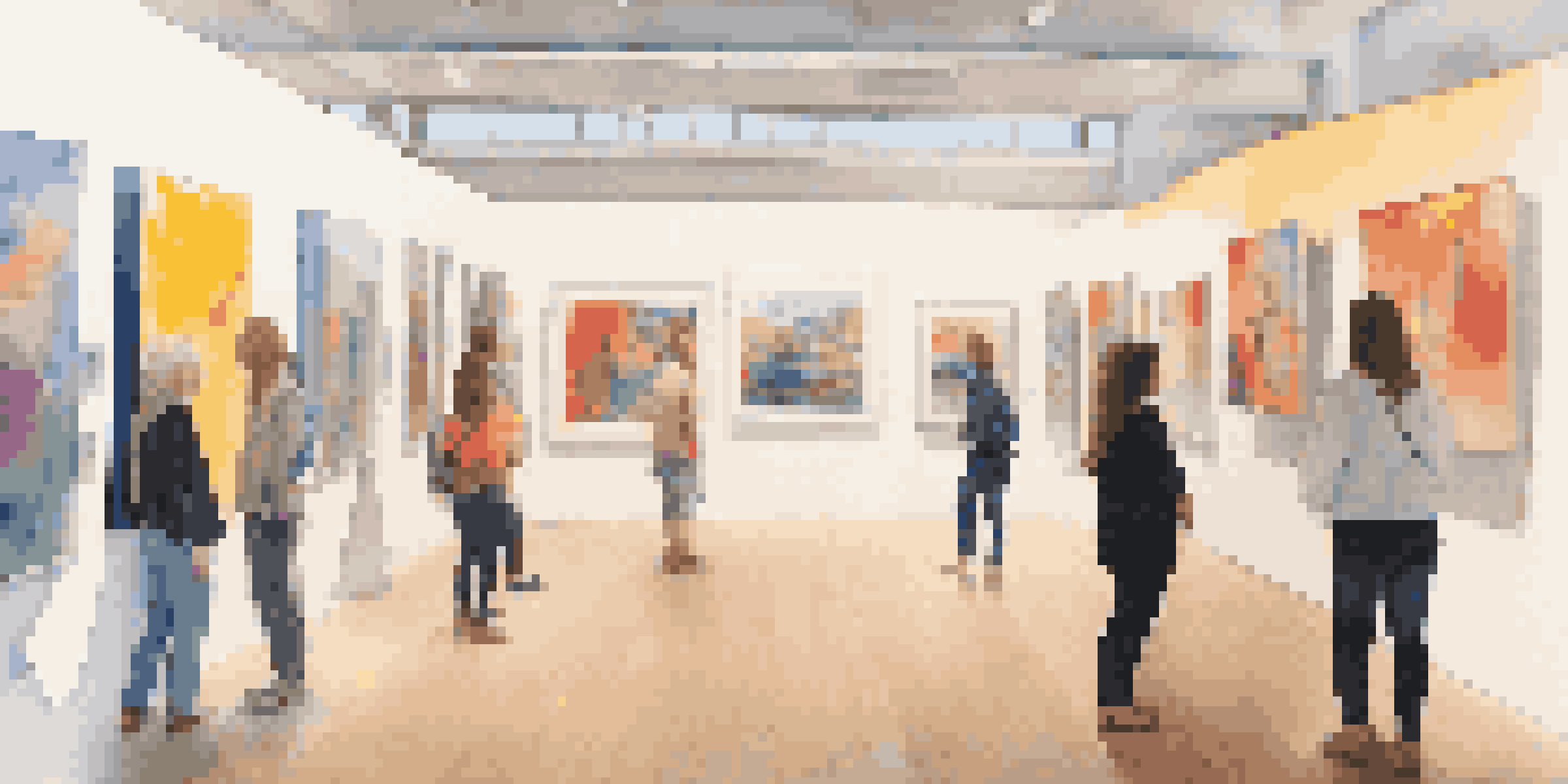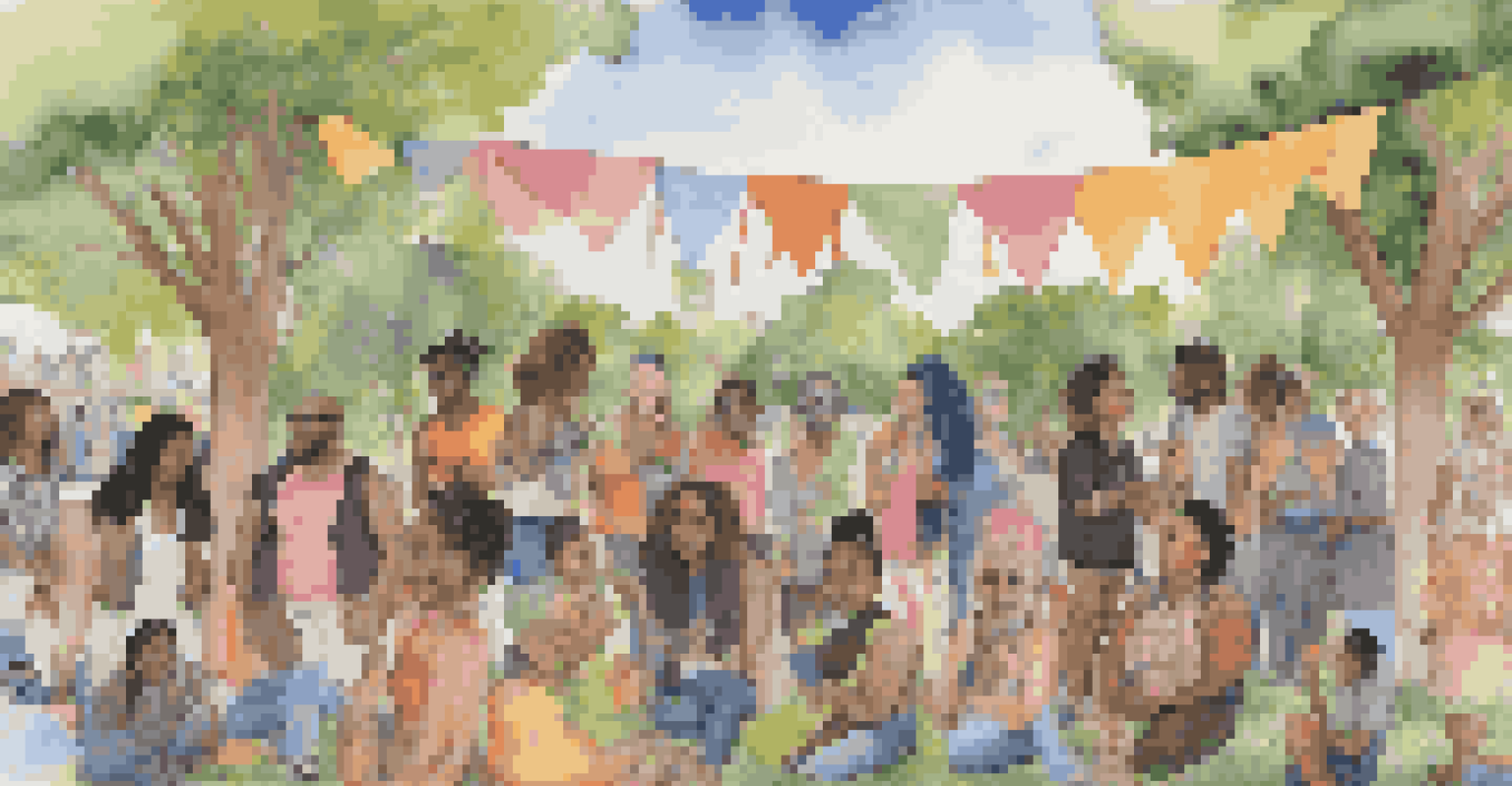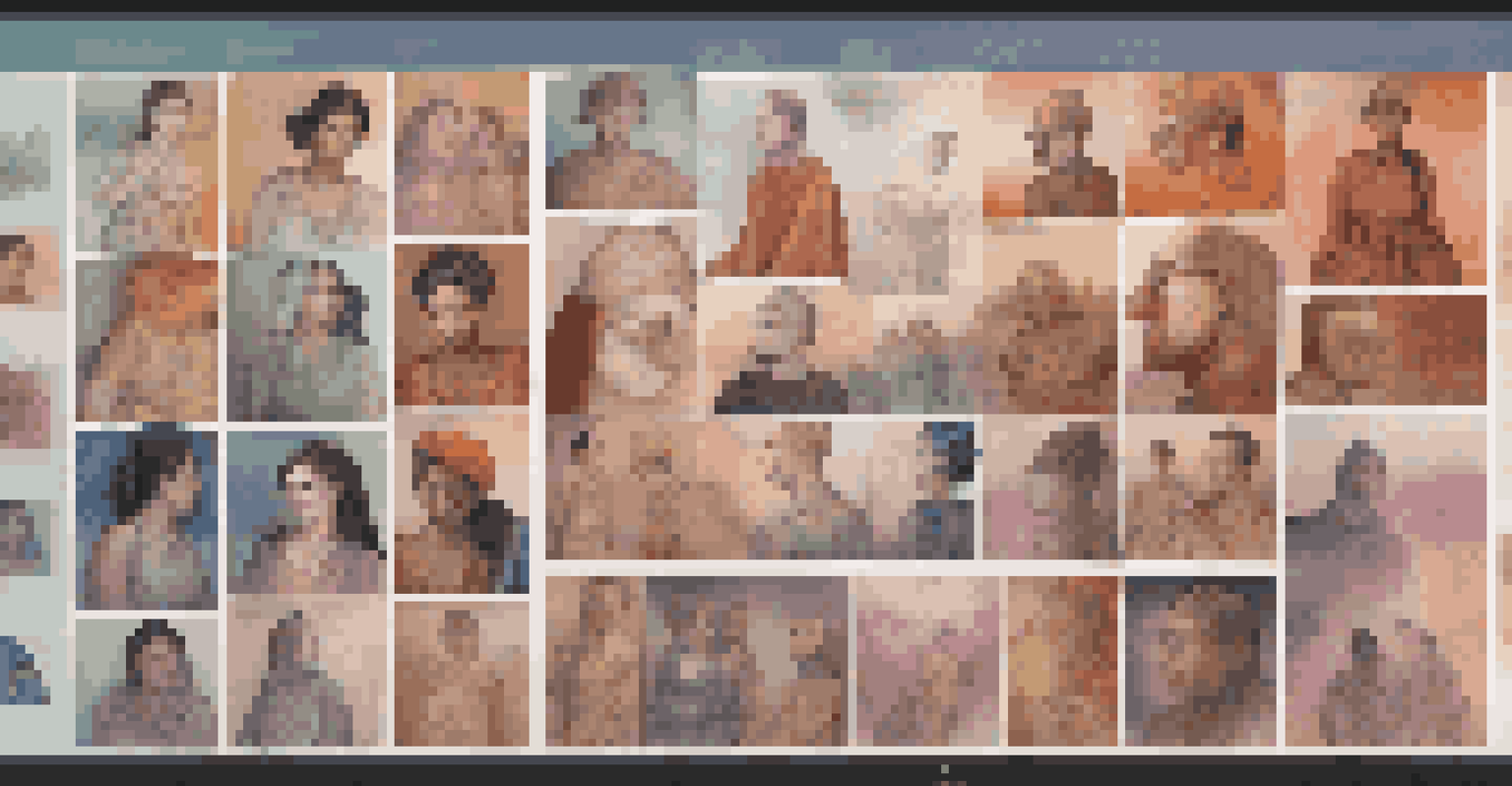The Future of Gender in Art: Trends and Predictions

The Evolution of Gender Representation in Art
Art has always been a mirror reflecting societal values, and gender representation is no exception. Historically, male artists dominated the scene, often portraying women through a male gaze. However, as society evolves, so does the representation of gender in art, moving towards more inclusive and diverse portrayals.
Art is a reflection of society, and it is imperative to include diverse voices to truly represent the human experience.
Today, we see a shift where artists from all gender identities are not only creating work but also challenging traditional narratives. This evolution is not just about women in art but also about non-binary and queer perspectives that enrich the artistic landscape. By embracing these diverse voices, the art world reflects a more accurate representation of our society.
As we look to the future, the importance of understanding and appreciating these varied perspectives will only grow. Artists are likely to continue pushing boundaries, creating works that resonate with a broader audience and foster deeper connections across gender identities.
Emerging Trends in Gender and Art
One prominent trend is the rise of collaborative projects that celebrate gender fluidity and intersectionality. Artists are increasingly joining forces to create works that highlight the complexities of identity, blending various mediums and styles. This collaborative spirit not only fosters community but also encourages dialogue around gender issues.

Additionally, technology plays a crucial role in shaping these trends. Digital platforms allow artists to reach wider audiences and engage in conversations about gender representation in real time. Social media campaigns and online exhibitions are making it easier for marginalized voices to be heard, creating a more inclusive art world.
Art Reflects Evolving Gender Roles
The representation of gender in art is shifting towards inclusivity, embracing diverse voices beyond traditional male perspectives.
As these trends continue to unfold, we can expect to see innovative expressions of gender in art, challenging traditional norms and inviting viewers to rethink their perceptions. The future of art is likely to be increasingly participatory, as artists and audiences alike engage in meaningful discussions about gender.
The Role of Social Media in Gender and Art
Social media has become a powerful tool for artists to express their gender identities and connect with like-minded individuals. Platforms like Instagram and TikTok are teeming with artists who use their work to challenge stereotypes and share their personal narratives. This democratization of art allows for previously marginalized voices to gain visibility.
The future belongs to those who believe in the beauty of their dreams, and art is a powerful tool to express those dreams.
Furthermore, social media enables artists to engage directly with their audience, fostering a sense of community and support. For many, it serves as a safe space to explore and express their gender identity, breaking down barriers that traditional art institutions may impose. This interaction creates a dynamic dialogue that enriches the artistic experience.
As we move forward, the influence of social media on gender representation in art will likely increase. Artists will continue to utilize these platforms to provoke thought, inspire change, and cultivate a sense of belonging within the art community.
The Impact of Gender Identity on Artistic Styles
Gender identity significantly influences artistic styles and practices. Artists often draw from their experiences to shape their work, leading to unique expressions that reflect their identities. For instance, feminist artists may employ a more collaborative or community-focused approach, while queer artists might explore themes of fluidity and ambiguity in their pieces.
This impact extends beyond individual styles; it also influences broader art movements. As artists redefine conventional norms, we witness a shift in how art is created and perceived. The integration of diverse gender perspectives can lead to the emergence of new genres that challenge traditional boundaries.
Social Media Amplifies Artistic Voices
Platforms like Instagram and TikTok allow artists to express their gender identities and connect with audiences, fostering community and dialogue.
In the future, we can anticipate a continued blending of styles that celebrates gender diversity. This evolution will not only enrich the art world but also encourage more individuals to engage with and appreciate various artistic expressions.
Art Institutions and Gender Inclusivity
Art institutions are beginning to recognize the need for greater inclusivity when it comes to gender representation. Many galleries and museums are reevaluating their collections and exhibition practices to ensure that diverse voices are represented. This shift is essential for fostering an environment where all artists feel valued and included.
Initiatives such as gender parity in exhibitions and dedicated programs for underrepresented artists are becoming more common. Institutions are also hosting discussions and workshops that address gender issues within the art world, creating spaces for dialogue and education. These efforts signal a growing awareness of the importance of diversity.
As we look ahead, it is crucial for art institutions to continue pushing for gender inclusivity. By doing so, they not only enrich their programming but also contribute to a more equitable art world that reflects the diversity of human experience.
The Intersection of Gender and Other Identities
Understanding gender in art also involves recognizing its intersection with other identities, such as race, sexuality, and class. Artists who navigate multiple identities bring a rich tapestry of experiences to their work, often addressing complex themes that resonate with a broader audience. This intersectionality is vital for fostering empathy and understanding within the art community.
Moreover, as conversations around intersectionality gain momentum, we can expect to see more collaborative projects that highlight these interconnected identities. Artists are increasingly exploring how gender interacts with other aspects of identity, leading to more nuanced and impactful artworks. This exploration can spark vital discussions about societal issues and promote inclusivity.
Intersectionality Enriches Art
Understanding gender in art involves recognizing its interplay with other identities, leading to more nuanced and impactful artworks.
Looking forward, the dialogue surrounding the intersection of gender and other identities will likely become more pronounced in the art world. This shift will not only enhance artistic expression but also encourage a more holistic understanding of the diverse human experience.
Predictions for the Future of Gender in Art
As we gaze into the future, it’s clear that gender in art will continue to evolve in exciting ways. We can anticipate a surge in innovative artistic expressions that challenge societal norms and celebrate diversity. Artists will likely experiment with new mediums and technologies, creating works that resonate with contemporary audiences.
Additionally, the conversation around gender representation will become more mainstream, influencing not just the art world but also broader cultural narratives. Issues of gender equality, representation, and identity will be at the forefront, prompting artists and institutions to reflect these themes in their work and programming.

Ultimately, the future of gender in art promises to be vibrant and dynamic. As artists push boundaries and explore new frontiers, we’ll witness a richer, more inclusive artistic landscape that invites everyone to engage with and appreciate the power of art in shaping our understanding of gender.